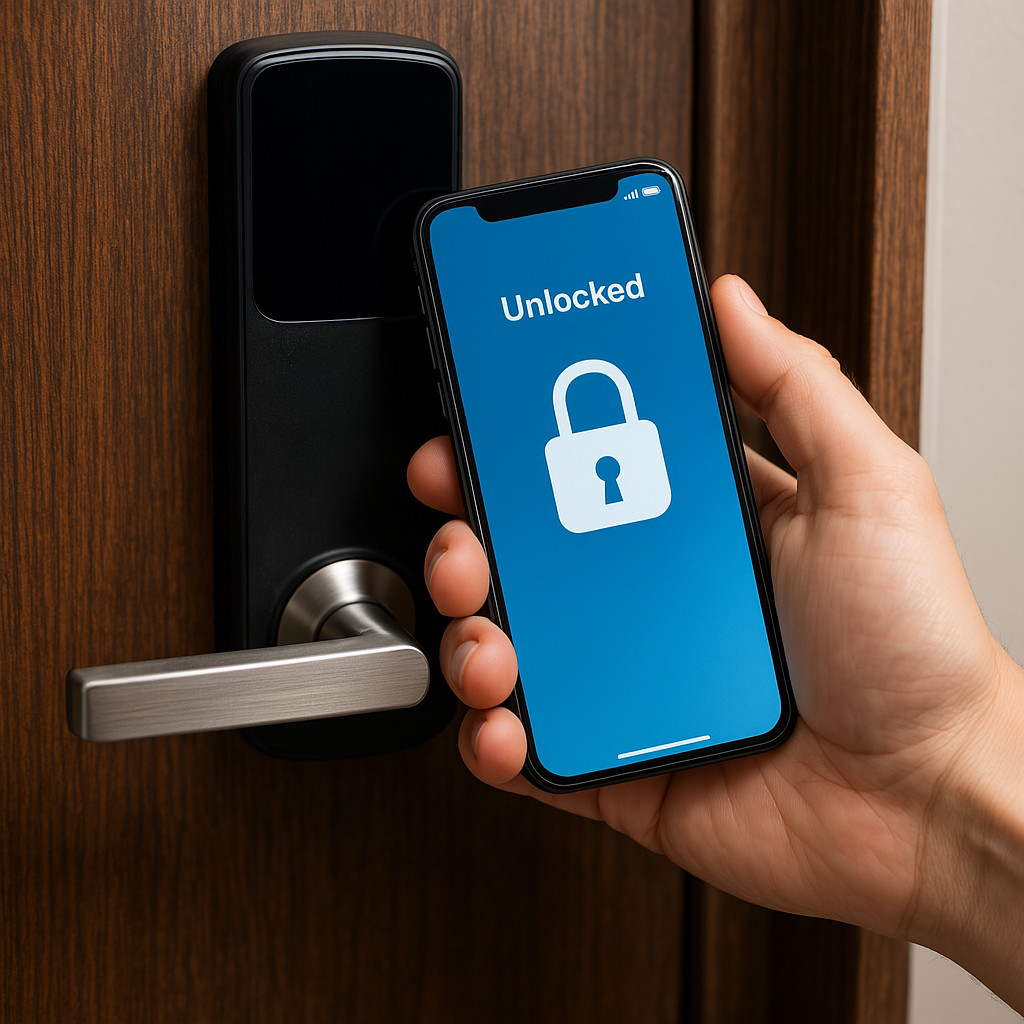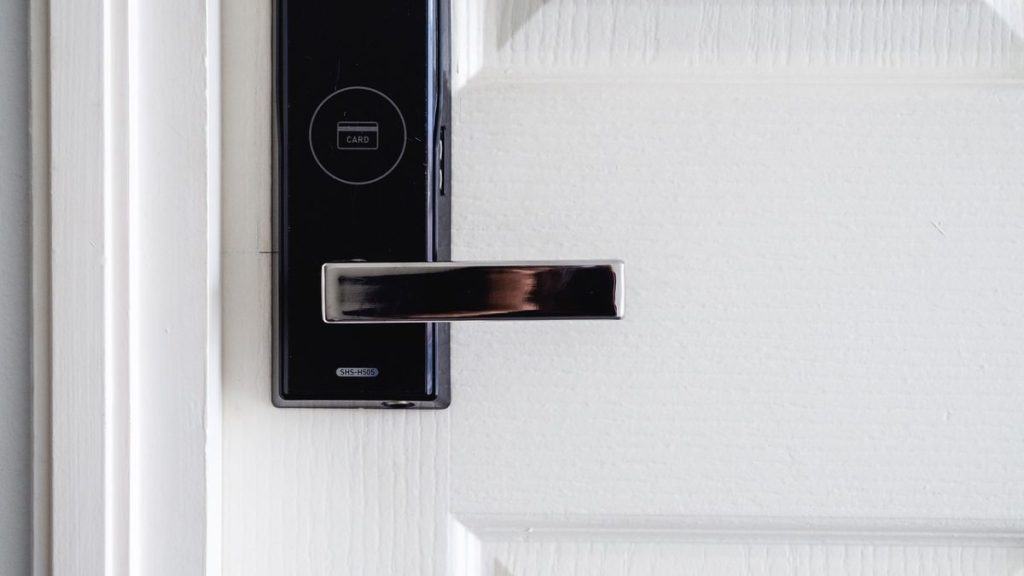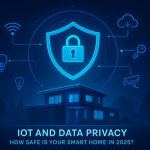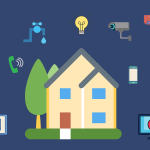The days of fumbling for your keys in the dark or worrying about losing them are quickly becoming a thing of the past. Thanks to smart locks, keyless entry is now a reality—combining convenience, control, and enhanced security for modern homes. Whether you’re upgrading your front door or building a smart home from scratch, smart locks are a feature worth considering.
In this article, we’ll explore how smart locks work, the types available, their benefits and drawbacks, and what to consider before making the switch.
🔐 What Are Smart Locks?
Smart locks are electronic door locks that allow you to lock and unlock your door without using a traditional key. They typically connect to your smartphone, home Wi-Fi, or smart home hub via Bluetooth, Wi-Fi, or Z-Wave/Zigbee. Some even offer integration with voice assistants like Amazon Alexa, Google Assistant, or Apple HomeKit.
You can control smart locks through:
- A mobile app
- Voice commands
- Keypad PIN codes
- Biometric data (e.g., fingerprint)
- Remote access via cloud services
🔄 How Do Smart Locks Work?

Smart locks replace or work alongside your existing door lock hardware. Depending on the model, they can be installed over your existing deadbolt or as a full replacement.
Here’s a simplified breakdown:
- Authentication: The lock verifies your identity using credentials (phone, PIN, fingerprint, etc.).
- Authorization: If verified, it allows access by releasing the bolt.
- Monitoring: Many smart locks track and log entry/exit activity for added awareness.
- Remote Access: With Wi-Fi or a smart hub, you can lock/unlock your door from anywhere.
🏡 Key Benefits of Smart Locks
✅ Keyless Convenience
No need to carry keys or worry about losing them. Just tap your phone or enter a code.
✅ Remote Control
Forgot to lock the door? You can do it remotely from your phone—no matter where you are.
✅ Access Sharing
Create temporary access codes or digital keys for family, guests, or service providers.
✅ Enhanced Security Features
Many smart locks offer tamper alerts, auto-lock timers, and activity logs for peace of mind.
✅ Smart Home Integration
Sync your smart lock with other devices—for example, unlocking the door could trigger lights to turn on.
⚠️ Potential Drawbacks to Consider
❌ Battery Dependency
Smart locks need batteries, and if they die, you could get locked out. Always check battery life.
❌ Connectivity Issues
Poor Wi-Fi or Bluetooth connection can delay responses or hinder remote access.
❌ Cost
Smart locks are more expensive than traditional locks, with quality models starting around $100–$300.
❌ Hacking Risk
As with any smart device, there’s a small risk of cyber attacks. Choosing reputable brands and setting strong passwords helps reduce this.
🔍 Choosing the Right Smart Lock
When shopping for a smart lock, keep these factors in mind:
- Compatibility with your door type
- Power source (batteries vs. wired)
- Connectivity (Bluetooth, Wi-Fi, Zigbee, etc.)
- Installation method (retrofit vs. full replacement)
- Backup options (manual key, fingerprint, code)
- Integration with your existing smart home setup
Popular Brands:
- August Smart Lock
- Yale Assure Lock
- Schlage Encode
- Level Lock
- Eufy Smart Lock
🔧 Real-World Use Cases
- Airbnb Hosts: Assign time-limited codes to guests—no need for key handoffs.
- Busy Families: Kids can enter with their own code; parents receive alerts.
- Frequent Travelers: Remotely let in cleaners, pet sitters, or package delivery drivers.
💡 Smart Tip
Pair your smart lock with a video doorbell or security camera for a comprehensive home security setup. That way, you can see who’s at the door before granting access.
Final Thoughts
Smart locks offer a powerful blend of convenience and control, making them a must-have in today’s connected home. While there are a few trade-offs to consider, the benefits—especially in terms of keyless entry, remote access, and integrated security—far outweigh the downsides for most users.
Whether you’re trying to simplify your daily routine or secure your home more effectively, smart locks are a smart move.
Featured image by Pixabay
- Designing a Smarter Home in 2026: What People Get Wrong About Automation
 Smart homes were once science fiction, but today they’re a reality in millions of households. With voice assistants, smart plugs, and automated lighting systems, it’s easy to assume home automation is simply a matter of plugging in a few devices. Yet, many homeowners quickly discover that “smart” doesn’t always mean simple. In this article, we’ll…
Smart homes were once science fiction, but today they’re a reality in millions of households. With voice assistants, smart plugs, and automated lighting systems, it’s easy to assume home automation is simply a matter of plugging in a few devices. Yet, many homeowners quickly discover that “smart” doesn’t always mean simple. In this article, we’ll… - Automated Online Trading: How IoT is Redefining Financial Markets
 Introduction automated online trading In a world where milliseconds can decide millions, the fusion of Internet of Things (IoT) technology and automated online trading is reshaping global finance. What once relied solely on human judgment now increasingly depends on connected machines, real-time data, and predictive algorithms. From weather sensors influencing agricultural trades to smart logistics…
Introduction automated online trading In a world where milliseconds can decide millions, the fusion of Internet of Things (IoT) technology and automated online trading is reshaping global finance. What once relied solely on human judgment now increasingly depends on connected machines, real-time data, and predictive algorithms. From weather sensors influencing agricultural trades to smart logistics… - The Role of Linux in IoT: Powering the Connected World
 The Internet of Things (IoT) is everywhere—from smart homes and wearable devices to industrial automation and self-driving cars. Behind the scenes, one operating system plays a surprisingly dominant role: Linux. Known for its stability, flexibility, and open-source nature, Linux has become the backbone of countless IoT devices and platforms. But what makes Linux so well-suited…
The Internet of Things (IoT) is everywhere—from smart homes and wearable devices to industrial automation and self-driving cars. Behind the scenes, one operating system plays a surprisingly dominant role: Linux. Known for its stability, flexibility, and open-source nature, Linux has become the backbone of countless IoT devices and platforms. But what makes Linux so well-suited… - The Smart Home Revolution in 2025: How IoT is Transforming Everyday Living
 In the past decade, the vision of a truly smart home has moved from futuristic fantasy to everyday reality. As we step into 2025, the Internet of Things (IoT) has matured into a robust ecosystem, connecting appliances, security systems, lighting, and even entertainment devices under one seamless digital roof. The result? Homes that are safer,…
In the past decade, the vision of a truly smart home has moved from futuristic fantasy to everyday reality. As we step into 2025, the Internet of Things (IoT) has matured into a robust ecosystem, connecting appliances, security systems, lighting, and even entertainment devices under one seamless digital roof. The result? Homes that are safer,… - IoT and Data Privacy: How Safe Is Your Smart Home in 2025? – IoT Security
 The smart home revolution has made everyday life more convenient than ever. From voice assistants that control the lights to security cameras that send alerts directly to your phone, connected devices have become part of our daily routines. But with this convenience comes an important question: how safe is your personal data in a world…
The smart home revolution has made everyday life more convenient than ever. From voice assistants that control the lights to security cameras that send alerts directly to your phone, connected devices have become part of our daily routines. But with this convenience comes an important question: how safe is your personal data in a world…
Partner sites: Linuxlap.com and gee-tech.com







